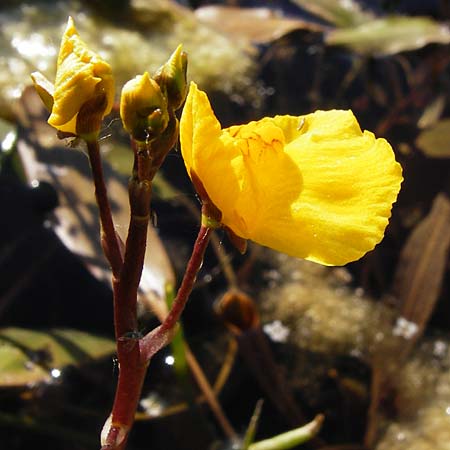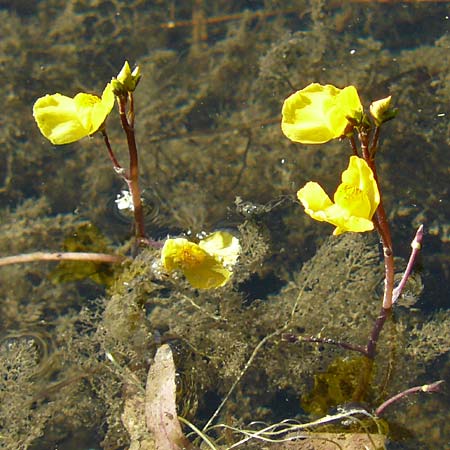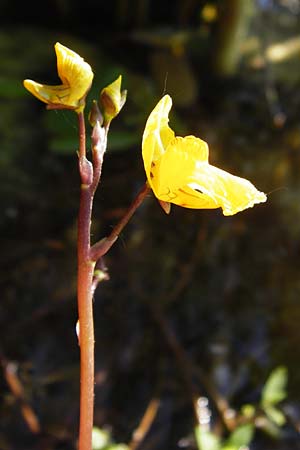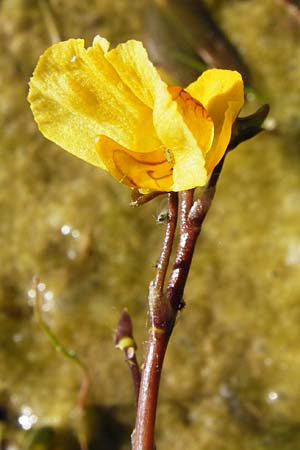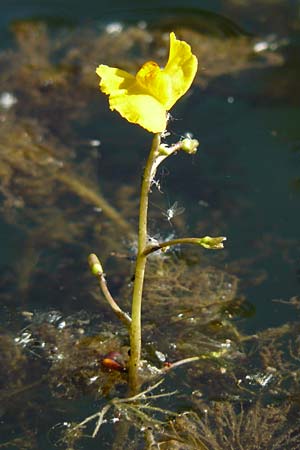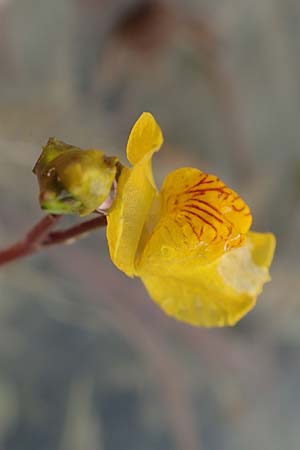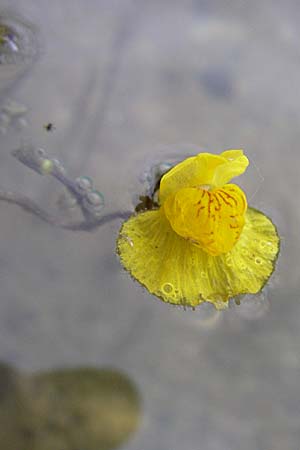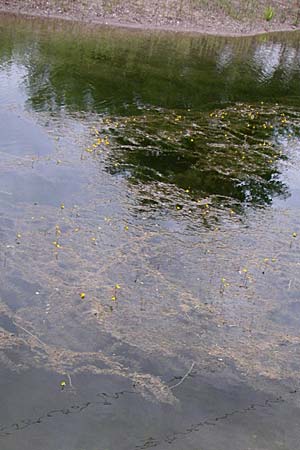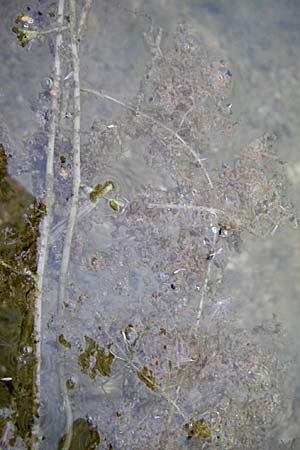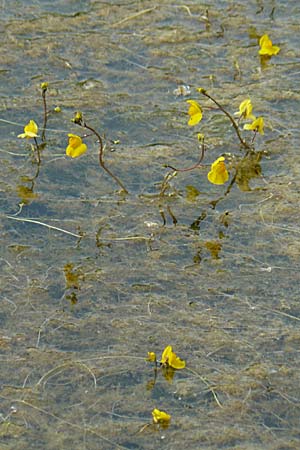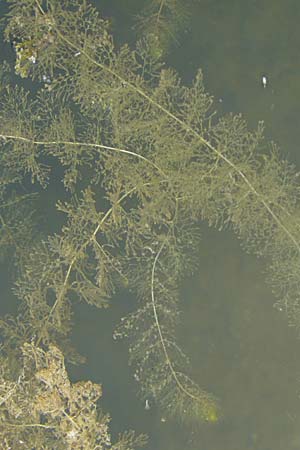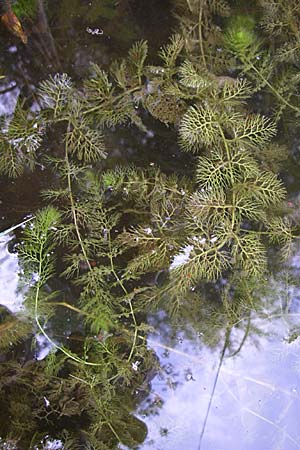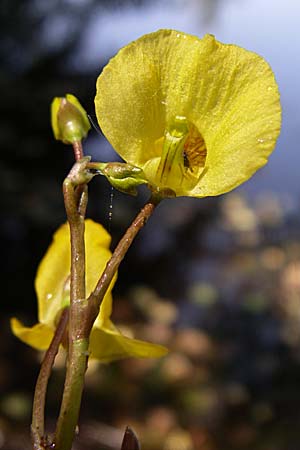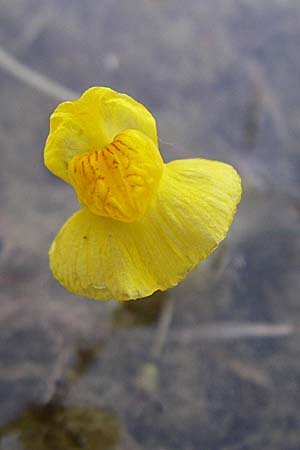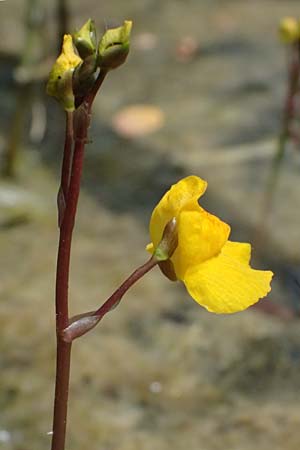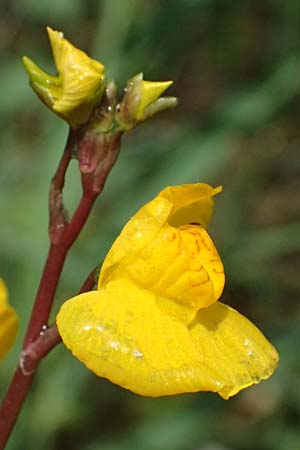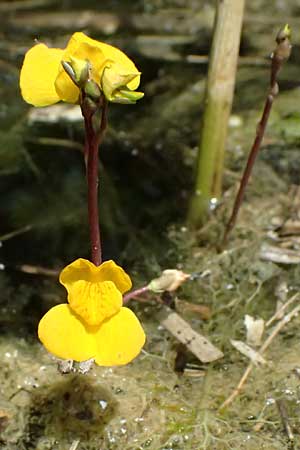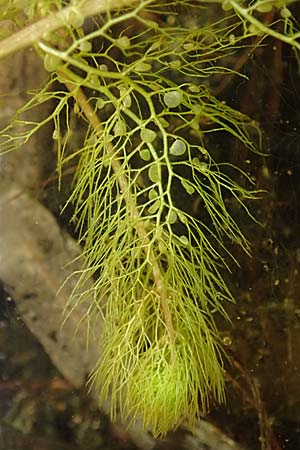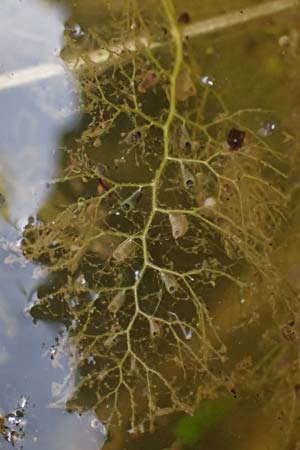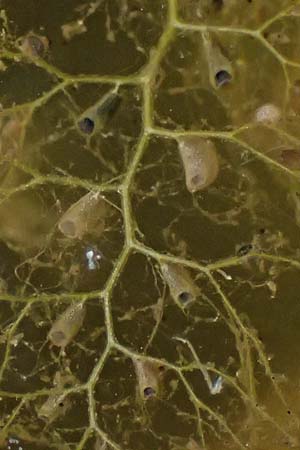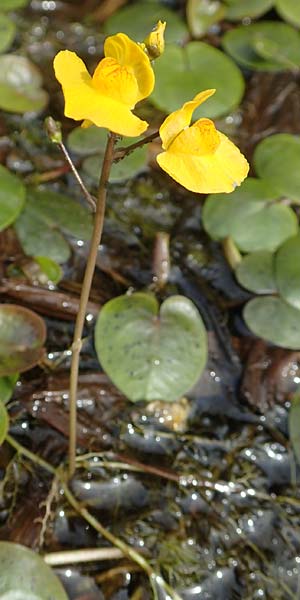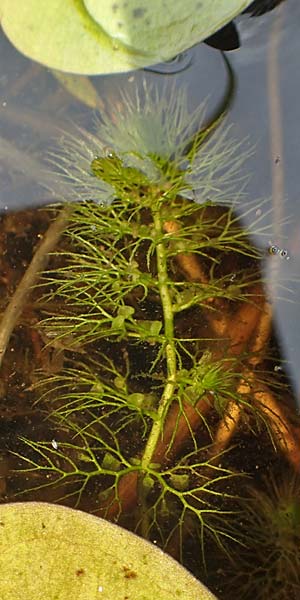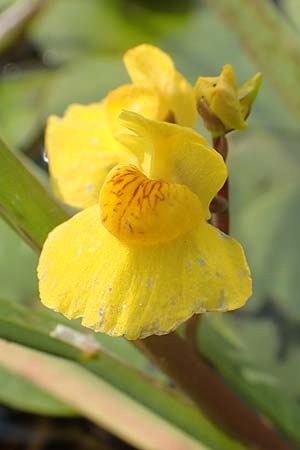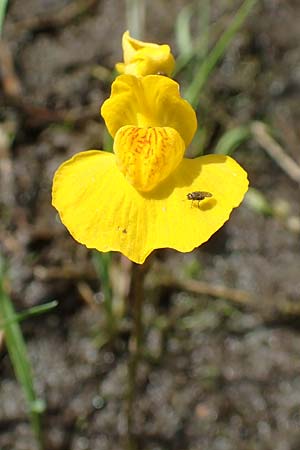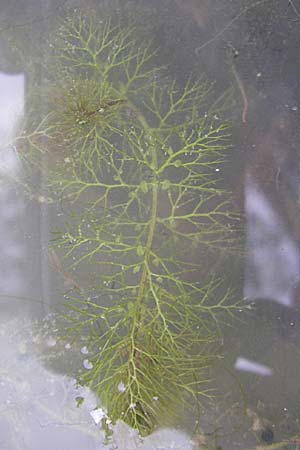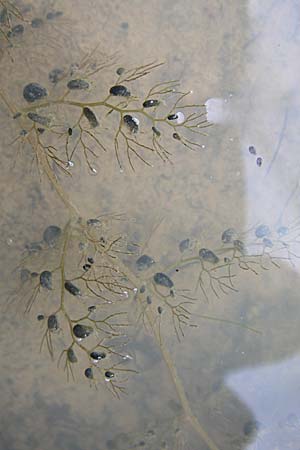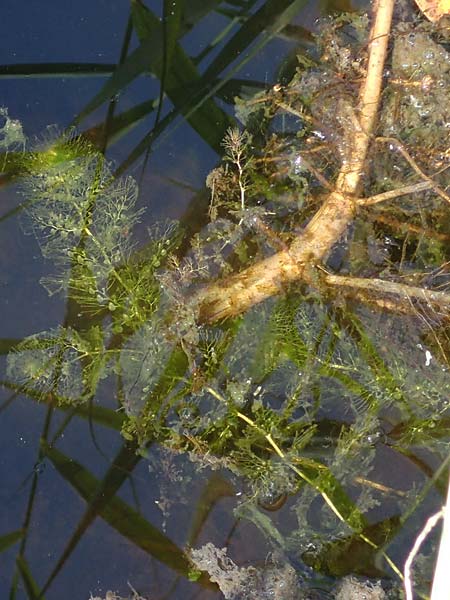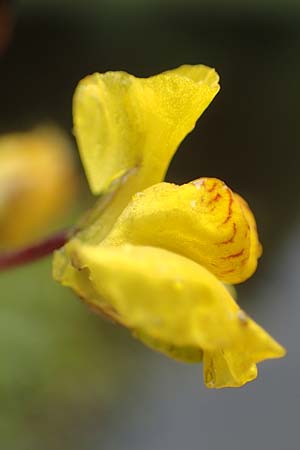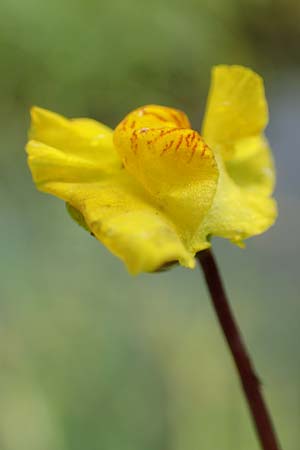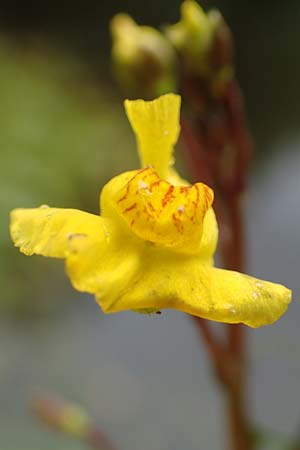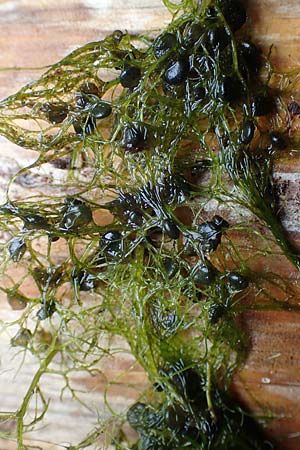Mehrere Jahre lang wurde der hier abgebildete Wasserschlauch, der in Deutschland mit Abstand der häufigste ist, falsch Utricularia australis R.BR. genannt.
Doch dieser Name bezeichnet in Wirklichkeit die in Ostasien vorkommende Hybridsippe zwischen Utricularia macrorhiza LECONTE und Utricularia tenuicaulis MIKI .
Der wirkliche Name unseres hier abgebildeten häufigen Wasserschlauchs lautet Utricularia neglecta, also Verkannter Wasserschlauch, und auch dies ist eine Hybridsippe.
Die Eltern sind erst seit 2022 bekannt: der selten gewordene mitteleuropäische Echte Wasserschlauch Utricularia vulgaris L.
und Utricularia tenuicaulis MIKI aus Ostasien.
Als sterile Hybridsippe verbreitet sich Utricularia neglecta nicht über Samen, sondern vegetativ, z.B. über Stängelbruchstücke, und dies in den letzten Jahrzehnten recht erfolgreich.
Da es sich bei Utricularia neglecta um eine Hybridsippe und nicht um eine Primärhybride handelt, ist die Anwendung des Hybridzeichens x nicht nötig.
Der Winkel zwischen der Ober- und Unterlippe von Utricularia neglecta ist stumpf, die Unterlippe flach, und die Blütenstiele rot überlaufen.
Samen bilden sich nicht, die Samenkapseln sind nur ganz schmal und taub. Nicht nur in Europa, sondern auch in Asien, Afrika und Australien ist der Verkannte Wasserschlauch weit verbreitet.
Die eine Elternart von Utricularia neglecta, der Echte Wasserschlauch Utricularia vulgaris vermehrt sich sexuell, sodass Samenkapseln vorhanden sind.
Der Sonne ausgesetzte Blütenstängel sind rot überlaufen. Der Winkel zwischen der Ober- und Unterlippe der Blüte ist spitz. Die beiden Seiten der Unterlippe sind nach unten gebogen.
Die Art ist in Mitteleuropa ziemlich selten geworden.
Die andere Elternart von Utricularia neglecta, der aus Ostasien stammende Japanische Wasserschlauch Utricularia tenuicaulis, ist in Europa nur sehr zerstreut vorhanden.
Es gibt mehrere Vorkommen in der Seenplatte 'Brenne' in Zentralfrankreich, sie wurden dort seit 1997 beobachtet und 2019 in Unkenntnis ihrer wirklichen Identität mit dem Synonym Utricularia brennensis GATIGNOL & ZUNINO benannt.
Auch weiter östlich in Frankreich wurden dann einzelne Vorkommen gefunden.
In Deutschland ist bisher nur ein Vorkommen bei Mechtersheim in der Pfalz bekannt.
Diese Art vermehrt sich ebenfalls sexuell, sodass Samenkapseln entstehen. Die Blütenstängel und die Schläuche an den Sprossen bleiben grün, auch wenn sie der Sonne ausgesetzt sind.
Wie bei Utricularia neglecta ist der Winkel zwischen der Ober- und Unterlippe der Blüte stumpf, die Unterlippe flach.
Der Fund von Utricularia tenuicaulis und die wahre Identität des früheren Utricularia australis als Utricularia neglecta bilden die Titelgeschichte im
Pollichia-Kurier 39 (4): 9-14 (2023).
For several years, the Bladderwort shown here, which is by far the most common in Germany, was incorrectly called Utricularia australis R.BR.
But this name actually refers to the hybrid clan found in East Asia between Utricularia macrorhiza LECONTE and Utricularia tenuicaulis MIKI .
The true name of our frequent Bladderwort shown here, is Utricularia neglecta, which is a hybrid clan, too.
The parents have only been known since 2022: the rather rare Central European Utricularia vulgaris L.
and Utricularia tenuicaulis MIKI from East Asia.
As a sterile hybrid clan, Utricularia neglecta does not spread via seed, but vegetatively, e.g. via stem fragments, and has done so quite successfully in recent decades.
Since Utricularia neglecta is a hybrid clan and not a primary hybrid, the use of the hybrid symbol x is not necessary.
In Utricularia neglecta the angle between the upper and lower lip is obtuse, the lower lip is flat and the flower stalks are tinged with red.
Seed is not generated, the seed capsules are only very narrow and deaf. Not only in Europe, but also in Asia, Africa and Australia, the Neglected Bladderwort is wide spread.
One parent species of Utricularia neglecta, the Bladderwort Utricularia vulgaris, reproduces sexually so that seed capsules are present.
Flower stems exposed to the sun are red. The angle between the upper and lower lips of the flower is acute. The two sides of the lower lip are curved downwards.
The species has become rather rare in Central Europe.
The other parent species of Utricularia neglecta, the Japanese Bladderwort Utricularia tenuicaulis, which comes from East Asia, is only very scattered in Europe.
There are several occurrences in the 'Brenne' lake district in central France, where it has been observed since 1997 and named in 2019 with the synonym Utricularia brennensis GATIGNOL & ZUNINO, due to ignorance of the real identity.
Also further East in France some sites have been found then. In Germany, only one occurrence is known so far, near Mechtersheim in the Palatinate.
This species also reproduces sexually, producing seed capsules. The flower stems and the bladders at the shoots remain green even if exposed to the sun.
As in Utricularia neglecta the angle between the upper and lower lip of the flower is obtuse, the lower lip is flat.
The discovery of Utricularia tenuicaulis and the true identity of the former Utricularia australis as Utricularia neglecta form the cover story in the
Pollichia-Kurier 39 (4): 9-14 (2023).
|
